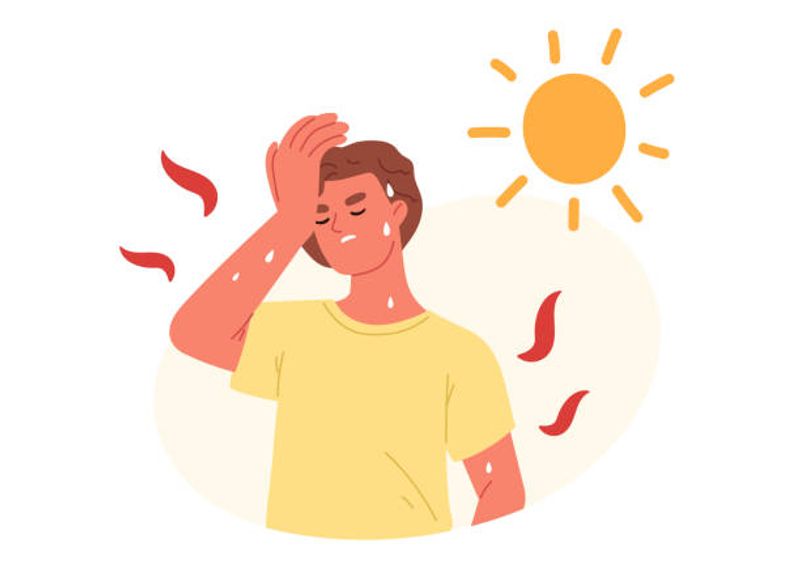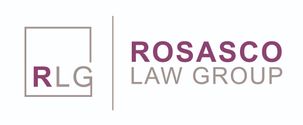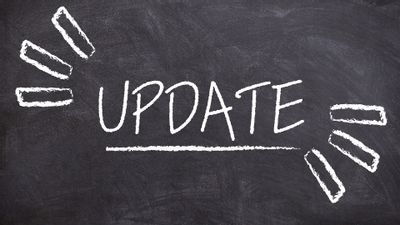If you can’t stand the heat, get out of the kitchen… or approve a new indoor heat standard!

The long-awaited indoor heat standard for California employers is now set for final passage later this summer as Cal/OSHA just approved the new indoor heat illness prevention rule, “Heat Illness Prevention in Indoor Places of Employment.” Once the Office of Administrative Law signs off, the rule is expected to be implemented in late July or early August. This may prove difficult for small businesses, especially those that lease their facilities and have little to no control over the environments. The new indoor heat standard flags two benchmark temperatures, 82 degrees and 87 degrees, and directs employers on the specific requirements when those temperatures are reached:
If the temperature reaches or exceeds 82 degrees indoors:
Provision of Water. Employees shall have access to potable drinking water, including but not limited to the requirements that it be fresh, pure, suitably cool, and provided to employees free of charge. The water shall be located as close as practicable to the areas where employees are working and in indoor cool-down areas. Where drinking water is not plumbed or otherwise continuously supplied, it shall be provided in sufficient quantity at the beginning of the work shift to provide one quart per employee per hour for drinking for the entire shift. The frequent consumption of water shall be encouraged.
Access to Cool-Down Areas. (1) The employer shall have and maintain one or more cool-down areas at all times while employees are present. The temperature in indoor cool-down areas shall be maintained at less than 82 degrees Fahrenheit, unless the employer demonstrates it is infeasible. (2) Employers shall allow and encourage employees to take a preventative cool-down rest in a cool-down area when employees feel the need to do so to protect themselves from overheating. Such access to cool-down areas shall be permitted at all times. (3) If an employee exhibits signs or reports symptoms of heat illness while taking a preventative cool-down rest or during a preventative cool-down rest period, the employer shall provide appropriate first aid or emergency response.
- For purposes of this section, preventative cool-down rest period has the same meaning as “recovery period” in Labor Code subsection 226.7(a), triggering premium pay compensation
Acclimatization. (1) Where no effective engineering controls are in use to control the effect of outdoor heat on indoor temperature, all employees shall be closely observed by a supervisor or designee during a heat wave. (2) An employee who has been newly assigned to any of the following shall be closely observed by a supervisor or designee for the first 14 days of employment: (A) In a work area where the temperature or heat index, whichever is greater, equals or exceeds 87 degrees Fahrenheit; or (B) In a work area where the temperature equals or exceeds 82 degrees Fahrenheit for employees who wear clothing that restricts heat removal; or (C) In a high radiant heat area where the temperature equals or exceeds 82 degrees Fahrenheit.
Training.
- Employee training. Effective training in the following topics shall be provided to each supervisory and non-supervisory employee before the employee begins work that should reasonably be anticipated to result in exposure to the risk of heat illness: (A) The environmental and personal risk factors for heat illness, as well as the added burden of heat load on the body caused by exertion, clothing, and personal protective equipment. (B) The employer's procedures for complying with the requirements of this section, including, but not limited to, the employer's responsibility to provide water, cool down areas, cool-down rests, control measures, and access to first aid as well as the employees' right to exercise their rights under this section without retaliation. (C) The importance of frequent consumption of small quantities of water, up to four cups per hour, when the work environment is hot and employees are likely to be sweating more than usual in the performance of their duties. (D) The concept, importance, and methods of acclimatization. (E) The different types of heat illness, the common signs, and symptoms of heat illness, and appropriate first aid and/or emergency responses to the different types of heat illness, and in addition, that heat illness may progress quickly from mild symptoms and signs to serious and life-threatening illness. (F) The importance of employees immediately reporting to the employer, directly or through the employee's supervisor, symptoms, or signs of heat illness in themselves, or in co-workers. (G) The employer's procedures for responding to signs or symptoms of possible heat illness, including how emergency medical services will be provided should they become necessary. (H) The employer's procedures for contacting emergency medical services, and if necessary, for transporting employees to a point where an emergency responder can reach them. (I) The employer's procedures for ensuring that, in the event of an emergency, clear and precise directions to the worksite can and will be provided as needed to emergency responders. These procedures shall include designating a person to be available to ensure that emergency procedures are invoked when appropriate.
- Supervisor training. Prior to supervising employees performing work that should reasonably be anticipated to result in exposure to the risk of heat illness, effective training on the following topics shall be provided to the supervisor: (A) The information required to be provided in employee training. (B) The procedures the supervisor is to follow to implement the applicable provisions in this section. (C) The procedures the supervisor is to follow when an employee exhibits signs or reports symptoms consistent with possible heat illness, including emergency response procedures. (D) Where the work area is affected by outdoor temperatures, how to monitor weather reports and how to respond to hot weather advisories.
Heat Illness Prevention Plan. The employer shall establish, implement, and maintain an effective Heat Illness Prevention Plan. The plan shall be in writing in both English and the language understood by the majority of the employees and shall be made available at the worksite to employees and to representatives of the Division upon request. The Heat Illness Prevention Plan may be included as part of the employer's Injury and Illness Prevention Program required by section 3203 or Heat Illness Prevention Plan required by section 3395 and shall, at a minimum, contain: (1) Procedures for the provision of water. (2) Procedures for access to cool-down areas. (3) Procedures to measure the temperature and heat index, and record whichever is greater; identify and evaluate all other environmental risk factors for heat illness; and implement control measures. (4) Emergency response procedures. (5) Procedures for acclimatization.
Additional measures if the temperature reaches or exceeds 87 degrees indoors:
Assessment and Control Measures. The employer shall measure the temperature and heat index, and record whichever is greater. The employer shall also identify and evaluate all other environmental risk factors for heat illness.
- Engineering controls. Engineering controls shall be used to reduce and maintain both the temperature and heat index to below 87 degrees Fahrenheit when employees are present, or to reduce the temperature to below 82 degrees Fahrenheit where employees wear clothing that restricts heat removal or work in high radiant heat areas, except to the extent that the employer demonstrates such controls are infeasible. When such controls are infeasible to meet the temperature and heat index thresholds, the employer shall: 1. Use engineering controls to reduce the temperature, heat index, or both, whichever applies, to the lowest feasible level, except to the extent that the employer demonstrates such controls are infeasible; and 2. Use engineering controls to otherwise minimize the risk of heat illness, except to the extent that the employer demonstrates such controls are infeasible.
“Engineering control” means a method of control or a device that removes or reduces hazardous conditions or creates a barrier between the employee and the hazard. Examples of engineering controls that may be effective at minimizing the risk of heat illness in a particular work area include, but are not limited to:
- isolation of hot processes
- isolation of employees from sources of heat
- air conditioning
- cooling fans
- cooling mist fans
- evaporative coolers (also called swamp coolers)
- natural ventilation where the outdoor temperature or heat index is lower than the indoor temperature or heat index
- local exhaust ventilation
- shielding from a radiant heat source
- insulation of hot surfaces
- Administrative controls. Where feasible engineering controls are not sufficient to reduce and maintain the temperature and heat index to below 87 degrees Fahrenheit when employees are present or the temperature to below 82 degrees Fahrenheit where employees wear clothing that restricts heat removal or work in high radiant heat areas, administrative controls shall be used to minimize the risk of heat illness, except to the extent that the employer demonstrates such controls are infeasible.
- Personal heat-protective equipment. Where feasible engineering controls are not sufficient to reduce and maintain the temperature and heat index to below 87 degrees Fahrenheit when employees are present or the temperature to below 82 degrees Fahrenheit where employees wear clothing that restricts heat removal or work in high radiant heat areas and feasible administrative controls do not minimize the risk of heat illness, personal heat-protective equipment shall be used to minimize the risk of heat illness, except to the extent that the employer demonstrates that use of such equipment is infeasible.
Temperature and heat index measurements shall be taken.
Exceptions to the indoor heat standard that may apply to your workplace:
- This section does not apply to places of employment where employees are teleworking from a location of the employee's choice, which is not under the control of the employer.
- This section does not apply to incidental heat exposures where an employee is exposed to temperatures at or above 82 degrees Fahrenheit and below 95 degrees Fahrenheit for less than 15 minutes in any 60-minute period. This exception does not apply to the following: 1. Vehicles without effective and functioning air conditioning; or 2. Shipping or intermodal containers during loading, unloading, or related work.
- This section does not apply to emergency operations directly involved in the protection of life or property.
- Prisons, local detention facilities, and juvenile facilities are exempt from this section.
As with all new rules, this may be a lot to take in at once for your business. Let Rosasco Law Group help you “beat the heat” this summer to ensure those Heat Illness Prevention Plans and/or Injury and Illness Prevention Programs are in compliance with the latest state directives.




